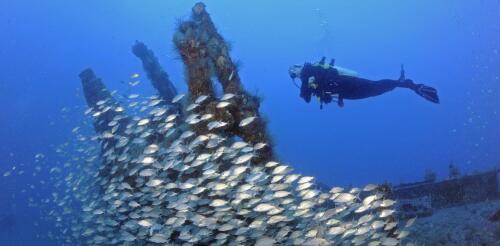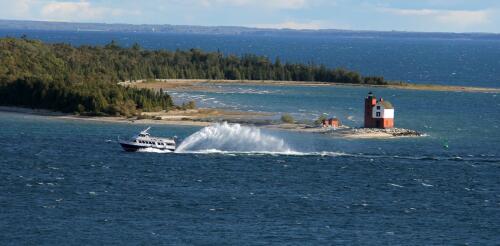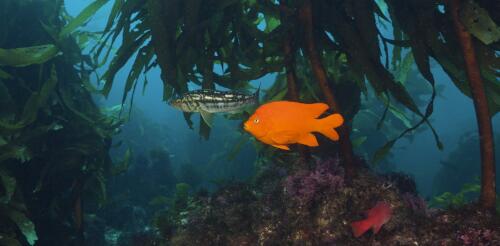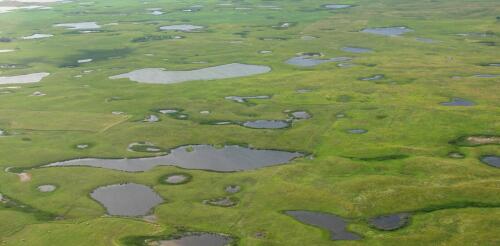Water pollution
Humans have sailed the world’s oceans for thousands of years, but they haven’t all reached port. Researchers estimate that there are some three million shipwrecks worldwide, resting in shallow rivers and bays, coastal waters and the deep ocean. Many sank during catastrophes – some during storms or after running aground, others in battle or collisions with other vessels. Shipwrecks like the RMS Titanic, RMS Lusitania and USS Monitor conjure tales of human courage and sacrifice, sunken treasure and unsolved mysteries. But there’s another angle to their stories that doesn’t feature humans. I have studied the biology of shipwrecks in the United States and internationally for 14 years. From this work, I have learned that shipwrecks are not only cultural icons but can also be biological treasures that create habitat for diverse communities of underwater life. The USS Monitor, which sank off Cape Hatteras, North Carolina, in a...
Should states and Indigenous nations be able to influence energy projects they view as harmful or contrary to their laws and values? This question lies at the center of a heated debate over Enbridge Energy’s Line 5 pipeline, which carries oil and natural gas across Wisconsin and Michigan. Courts, regulatory agencies and political leaders are deciding whether Enbridge should be allowed to keep its pipeline in place for another 99 years, with upgrades. The state of Michigan and the Bad River Tribe in Wisconsin want to close the pipeline down immediately. My expertise is in Great Lakes water and energy policy, environmental protection and sustainability leadership. I have analyzed and taught these issues as a sustainability scholar, and I have worked on them as the National Wildlife Federation’s Great Lakes regional executive director from 2015 until early 2023. In my view, the future of Line 5 has become a defining issue for the future of the Great Lakes region. It...
Arsenic is a naturally occurring element found in the Earth’s crust. Exposure to arsenic, often through contaminated food and water, is associated with various negative health effects, including cancer. Arsenic exposure is a global public health issue. A 2020 study estimated that up to 200 million people wordwide are exposed to arsenic-contaminated drinking water at levels above the legal limit of 10 parts per billion set by the U.S. Environmental Protection Agency and World Health Organization. More than 70 countries are affected, including the United States, Spain, Mexico, Japan, India, China, Canada, Chile, Bangladesh, Bolivia and Argentina. Since many countries are still affected by high levels of arsenic, we believe arsenic exposure is a global public health issue that requires urgent action. We study how exposure to toxic metals like arsenic can lead to cancer through the formation of cancer stem cells. Arsenic water contamination predomi...
Humans rely on the ocean for many things, including food, jobs, recreation and stabilization of Earth’s climate. But although ocean resources may seem infinite, human impacts like pollution, overfishing and climate change are creating what United Nations Secretary-General António Guterres has called an “ocean emergency.” Climate change is pushing ocean temperatures to record levels, many fisheries are overharvested, and plastic waste is accumulating in the deep sea. These five articles from The Conversation’s archive spotlight urgent challenges for ocean conservation, and describe what researchers are doing to devise effective responses. 1. A devastating invasion is expanding Invasive lionfish are aggressive predators, native to the Indo-Pacific Ocean, that feed on smaller reef fish. They have caused heavy damage in the Caribbean and Gulf of Mexico since they first appeared in the Atlantic in 1985. Now, they’ve spread south to Brazil, which ha...
The U.S. Supreme Court has ruled in Sackett v. EPA that federal protection of wetlands encompasses only those wetlands that directly adjoin rivers, lakes and other bodies of water. This is an extremely narrow interpretation of the Clean Water Act that could expose many wetlands across the U.S. to filling and development. Under this keystone environmental law, federal agencies take the lead in regulating water pollution, while state and local governments regulate land use. Wetlands are areas where land is wet for all or part of the year, so they straddle this division of authority. Swamps, bogs, marshes and other wetlands provide valuable ecological services, such as filtering pollutants and soaking up floodwaters. Landowners must obtain permits to discharge dredged or fill material, such as dirt, sand or rock, in a protected wetland. This can be time-consuming and expensive, which is why the Supreme Court’s ruling on May 25, 2023, will be of keen interest to developers,...



